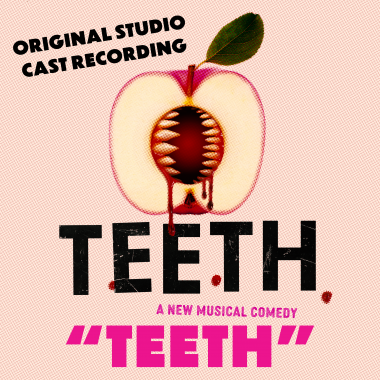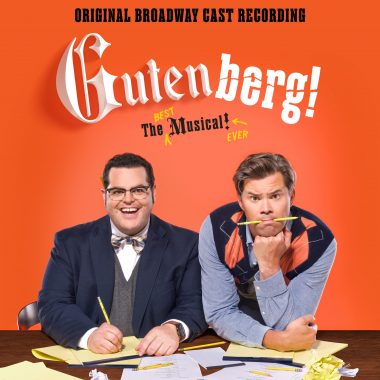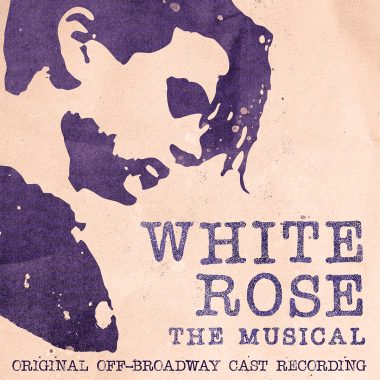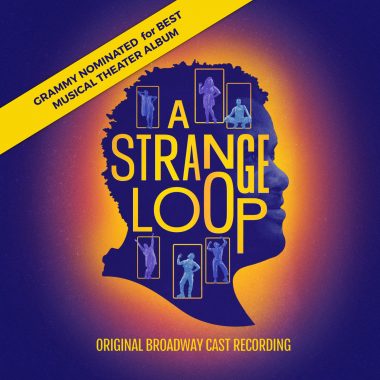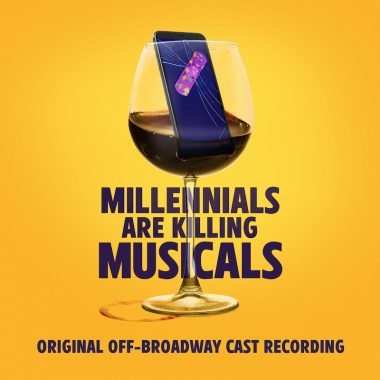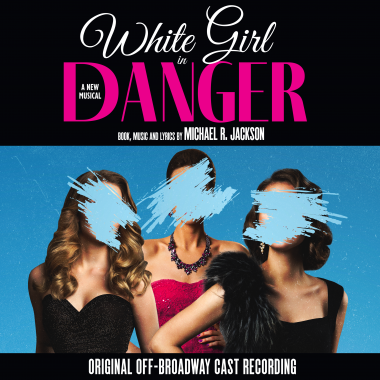
White Girl in Danger
AUTHOR’S NOTE AND MANIFESTO by Michael R. Jackson
White Girl In Danger is a Black musical. The second Black musical of mine that I’ve seen produced. To underline the significance of that, I must reflect on A Strange Loop, the first Black of mine that I saw produced. I started writing it as a monologue in 2003 and it went through various phases of development before getting its world premiere at Playwrights Horizons in 2019 in association with Page 73 Productions and supported by commercial producer Barbara Whitman who subsequently transferred it to Broadway in 2022 where it was nominated for 11 Tony Awards, winning two (one for me for Best Book and one for the show itself) after having been awarded a Pulitzer Prize (and just about every Off-Broadway award out there) two years earlier.
What a ride. What a strange loop.
A Strange Loop had been so (critically, and for a moment in time, commercially) successful that I often wondered if it was just a fluke of the DEI/BLM era. I questioned whether the White theater establishment would “permit” me to have a second show produced because of just how rare contemporary Black musicals penned by Black authors are seen on stages anywhere. Enter White Girl In Danger, in co-production with The Vineyard Theater and by Second Stage Theater after about 6 years of development, directed by Lileana Blain-Cruz and choreographed by Raja Feather Kelly. It was a show that very nearly didn’t happen at all when one of our unscrupulous enhancing producers dropped out of the production at the last minute with no explanation, leaving me to raise over a million dollars just six weeks before our rehearsals were set to begin. At Christmas time! But undeterred, I fought for the money harder than I knew I could fight for anything in my life. I even humbled myself enough to break my own personal emergency glass of pride, and call Tyler Perry, whose artistic work I had ruthlessly savaged in A Strange Loop, begging for a cool 250K. Unsurprisingly, he turned me down, but through some miracle or good will I had earned through A Strange Loop, I was able to secure the funding from other benefactors in the nick of time and the show went on.
It is my observation that “representation” is the number one issue that recurs when it comes to considering Black art and entertainment. The questions are always the same. Does it represent well? Does it represent enough? Does the representation make us feel “safe”? Or does the representation “harm” us? What will the White people think of the representation? What will Black people think of what the White people think of our representation? And most pressing, what will the White people who fund all our projects think of our representation?
The fact that these questions are constantly at play is at the heart of White Girl In Danger. Which brings me back to Tyler Perry and comments he made in a December 2022 interview with The Hollywood Reporter when he said, unprompted, “Jordan E. Cooper is an incredibly talented young man who credits a lot of his wanting to be in show business to my early plays. I wanted to do what I could to help him, and his cast continue on. Unlike A Strange Loop, which is about a Black man struggling with his Blackness, Ain’t No Mo is unapologetically Black.”
While I was mostly amused by Tyler’s comments given that he had never even bothered to come see the show or he would know how foolish his remarks were, they also gave me cause to ruminate because even if A Strange Loop were about “struggling with Blackness,” what exactly would be the problem with that? In Tyler’s eyes, was Blackness not worth struggling with? Or was the implication that if one “struggles” with Blackness, one is secretly struggling with anti-Blackness? Well, what’s wrong with struggling with anti-Blackness? The world has been very hard for a whole lot of Black people for a very long time, so I personally believe Blackness and anti-Blackness are worth struggling with. In the Hollywood Reporter and elsewhere because that struggle will hopefully build character and self-knowledge. That said, Tyler tapped into something deep without realizing what he was saying because in theory, to be “Unapologetically Black” means to show up with one’s whole Black self, culturally or otherwise without caring what White people think. It’s an expression that is used frequently in Black culture without much scrutiny or interrogation, but when I zoom out, it’s clear to me that unapologetic Blackness is just a series of performances to demonstrate how authentic one is (or wants to be). It’s a kind of pretending. It’s like walking the Realness category at a drag queen ball.
For that reason, Unapologetic Blackness is more for others to judge than oneself. I know that to be true because Unapologetically Black people are always congratulating and celebrating each other for demonstrating how unapologetic they are. As a series of performances, Unapologetic Blackness is fierce, fabulous, and fun. Being Unapologetically Black is so much damn fun. But I would also say—perhaps provocatively, that Unapologetic Blackness is in its own way, a form of minstrelsy—a word I use more for the purposes of describing it formally as a type of performance than to cast aspersions on its value.
Speaking of minstrelsy, in his 2019 Critics Pick review of Kenny Leon’s all-Black production of William Shakespeare’s play Much Ado About Nothing, lead drama critic Jesse Green made the following observation:
“They and the rest of the cast are black — and not in a colorblind-casting way, which would suggest they were pretending to be white. Rather, the actors play specifically black characters, drawing on their own resources of emotion and style to make those characters rich. Yes, there are interpolations of jive, hip-hop and the occasional “okurr!” in a production that has the loose-limbed feeling of a ’70s variety show.”
Like Tyler Perry, Jesse Green also tapped into something deep without realizing what he was tapping into because if Unapologetic Blackness is a form of minstrelsy as I assert, then what exactly is “pretending to be White”? I would offer that a performance of heightened or unapologetic Whiteness is also a minstrelsy performance. Okurr?
It is a historical fact that minstrelsy is a performance tradition steeped in racist stereotyping of Black people. But if the minstrel character of Mammy emerges from racist stereotyping for example, then where does the contemporary character of Karen come from?
“Well, fiddle-lee-dee,” said Scarlet. “I’d like to speak to your manager.”
“Mammy: pretending to be Black. Karen: pretending to be White. Tonight, on Lifetime, Television for Women.”
And who are the audiences for pretending to be Black or pretending to be White?
I would say historically, it’s all of us.
Because pretending is the most American thing of all. Race-pretending is especially American. It’s thrilling (and terrifying) because in America, race is both real and imagined at the same time. We’ve been in a soap opera pretending to be Black and pretending to be White all the days of our lives. We’ve been collaborating on these Black and White stereotypes all the days of our lives. And perhaps one of the many injustices on the books is that some of us have never been properly compensated for our authorial contributions or for our performances.
Which brings me back to White Girl In Danger.
White Girl In Danger is a musical love letter to the golden age soap operas I used to watch with my great Aunt Ruth as child. It is also a musical born of the legacy and questioning of minstrelsy, and contemporary culture’s obsession with race, racism and “representation.” The concept for the show was originally developed from an idea I came up with while I was in graduate school to spoof the Lifetime TV-movies featuring the most melodramatic portrayals of White girls and women I had ever seen in my life. I even wrote a little jingle in the style of something I imagined Nell Carter could have sung if she were still alive: “White girl in danger! She doin’ drugs but she won’t do her homework!”
White Girl In Danger was an idea that sat in the back of my mind for many years until conversations about “diversity, equity, and inclusion” caught my attention in the world of musical theater and in the entertainment world more broadly around 2015. It seemed I couldn’t go one day without hearing someone complain about why this or that show had been cast with all White people or why there couldn’t be a Black or POC version of a White show. Then there were the celebrations that would break out when a Black or POC actor was cast in a traditionally White show. As this tiresome discourse continued to rage, I pondered why the White center of fictional stories and representation was so coveted by so many—especially by those who were always professing themselves to be “Unapologetically Black.” It was in this contradiction that the White Girl In Danger jingle began to jangle in my head and an epic story idea began to take shape.
White Girl In Danger is a musical set in a fictional soap opera town called Allwhite where Allwhite characters live their lives with endless storylines of drama and intrigue as opposed to the Blackgrounds who suffer through endless storylines of slavery, police violence, and oppression. This cycle comes screeching to a halt when Blackground Keesha Gibbs declares her weariness over having to watch her boyfriend Tarik be murdered by the Allwhite police week after week like a bad dream. For Keesha, nothing would be more satisfying than getting to live as the Allwhites do—in a perpetual danger. But like, fun danger. It is at that moment that the Allwhite Writer announces from the heavens that because Molly Goodwhite was murdered by the Allwhite Killer, the role of best friend to Meagan, Maegan, and Megan would now be filled by Keesha. Ignoring warnings from fellow Blackgrouds and her mother Nell about the dangers of such a journey, Keesha heads into her own Allwhite story—unapologetically. But Keesha soon realizes that being a Blackground best friend to Meagan, Maegan and Megan does not satiate her appetite for drama or spotlight at all so she swears a blood oath to the Allwhite Writer who is so impressed with her passion that he sends her on a journey to the center of the ultimate Allwhite story where she must use her cunning to dethrone the Megans, win the Allwhite battle of the bands, and face the Allwhite Killer whose identity changes the course of Keesha’s Allwhite-obsessed Blackground life and story forever, leaving us to question do Blackground lives really matter? And if so, to whom? And just who is the Allwhite Writer anyway? To find out, stay tuned for the next White Girl In Danger! Or just listen to the cast album.
Special thanks to everyone who made this cast album happen including Huck, Brian, and Sean at Accidental Jacket, Salman Al-Rashid, Sue Drew at Kobalt, my super-agent Derek Zasky, my incredible, incredible orchestrator Lynne Shankel, the genius Michael Croiter and his team at Yellow Sound Label, Meg Zervoulis the captain of our White Girl In Danger music team, Terence Odonkor our music assistant, our killer band, and of course our glorious cast. The magic they were able to weave onstage and in the studio was unreal. With this album, they made all my Allwhite and Blackground dreams come true.
White Girl In Danger had a shorter run than I would have liked and is not currently slated for any subsequent productions. But I firmly believe in the show’s ambitions and its message no matter what any naysayers have to say about it. As I made a way out of no way to get the Vineyard/Second Stage production off the ground, I believe there is an incantation I can invoke so that White Girl In Danger may rise again armed with everything I learned along the way about writing and producing her. Herman Melville, the author of Moby Dick wrote, “woe to him who seeks to please rather than appall.” But I bristle at that sentiment as much as I appreciate it because my manifesto on WHITE GIRL IN DANGER is that WHITE GIRL IN DANGER must please and appall. WHITE GIRL IN DANGER must spit in the face of all orthodoxies, official and unofficial. WHITE GIRL IN DANGER must be heterodox. White Girl In Danger must be both a spy and a double agent. WHITE GIRL IN DANGER must keep her own counsel. WHITE GIRL IN DANGER must have her own agenda. WHITE GIRL IN DANGER must step on everybody’s goddamn daisies and hurt everybody’s goddamn feelings with a smile on her face that is so bright and charming that you immediately forgive and forget.
WHITE GIRL IN DANGER must run like the wind as she escapes from safe spaces and brave spaces and affinity spaces and Equity, Diversity, Inclusion, Access, Belonging paradigms and intersectional antiracist training sessions like Harry Houdini from a chained coffin underwater and into the great unknown. WHITE GIRL IN DANGER must have an attitude problem like Cartman from South Park going on Maury Povich saying “whatever, whatever, I can do what I want!!!!”
WHITE GIRL IN DANGER must love “people who look like me” but WHITE GIRL IN DANGER must also be very clear that she has an important mission and that “people who look like me” either gotta put on their New Balance running shoes and come along for the mission or stay wherever they are. The choice to stay or go is truly theirs. WHITE GIRL IN DANGER must stay on the run because somebody is always after her. Whether it’s the FBI, CIA, or body snatching pod people on social media claiming to be social justice warriors, freedom fighters and liberators.
WHITE GIRL IN DANGER must stay current with the news but WHITE GIRL IN DANGER must resist wallowing in news cycles. The world may turn fast but WHITE GIRL IN DANGER must turn faster, even in outrage, even in grief. Especially in outrage, especially in grief. That is WHITE GIRL IN DANGER’S power. The news can’t keep WHITE GIRL IN DANGER down because WHITE GIRL IN DANGER is a satire. And satires are here to skewer the goat, not to pet or placate it.
WHITE GIRL IN DANGER must be what the woke call “problematic and toxic” and what the anti-woke call “based.” And yet, like Joanne from the musical Company, WHITE GIRL IN DANGER must look at the world looking at her with these judgements and without missing a beat say: “sometimes I catch him looking and looking … I just look right back!”
It’s a fever dream mashup of classic daytime and primetime soap operas, Lifetime movies, and red-hot melodrama. The citizens of the soap opera town Allwhite face high-stakes drama and intrigue all the days of their lives. But Keesha Gibbs and the other Blackgrounds have been relegated to backburner stories of slavery and police violence for all of theirs. Keesha is determined to step out of the Blackground and into the center of Allwhite’s juiciest stories. Can Keesha handle the Allwhite attention—especially from the Allwhite Killer on the loose? What role do the other Blackgrounds play in Keesha’s Allwhite schemes? And just whose story is this anyway?
Music, Lyrics and Book by Michael R. Jackson
Produced by Michael Croiter, Lynne Shankel and Michael R. Jackson
Executive Produced by Salmon Al-Rashid and Accidental Jacket Entertainment
Co-Produced by Meg Zervoulis
Mixed and Edited by Michael Croiter
Mastered by Michael Fossenkemper
Recording Engineer – Andy Manganello
Pro Tools Engineer – Benjamin Miller
Assistant Engineer – Michael Hickey
Art Design by Robbie Rozelle
Recorded at Power Station, NYC
Mixed at Yellow Sound Lab
Cast
Diane Whitehead/Barbara Whitehall/Judith White – Liz Lark Brown
Florence – Kayla Davion
Keesha Gibbs – Latoya Edwards
Abilene – Jennifer Fouche
Caroline – Morgan Siobhan Green
Megan White – Molly Hager
Tarik Blackwell – Vincent Jamal Hooper
Clarence – James Jackson Jr.
Nell Gibbs – Tarra Conner Jones
Maegan Whitehall – Alyse Alan Louis
Meagan Whitehead – Lauren Marcus
Matthew Scott, Scott Matthew, Zack Paul Gosselar – Eric William Morris
Ensemble:
LaDonna Burns
Alexis Cofield
Shane Donovan
Ciara Alyse Harris
Jon-Michael Reese
Natalie Walker
Rocky Anicette
Music Department
Music Supervisor/Music Director/Keyboard 1 – Meg Zervoulis
Associate Music Director/Keyboard 2 – Anessa Marie
Assistant Music Director/Keyboard 2 – Rebekah Bruce
Drums – Josh Priest
Guitar 1 – Marc Malsegna
Guitar 2/Autoharp – Jakob Reinhardt
Bass – Vivi Rama
Woodwinds – Ben Kono
Orchestrations by Lynne Shankel
Piano Arranger/Music Copyist – Adam Wiggins
Ableton Programmer – Julianne Merrill
Music Copyist – Ryan Driscoll
Production Music Assistant – Terence “T” Odonkor
Keyboard Programmer – Randy Cohen Keyboards LLC
